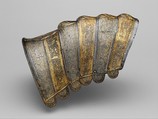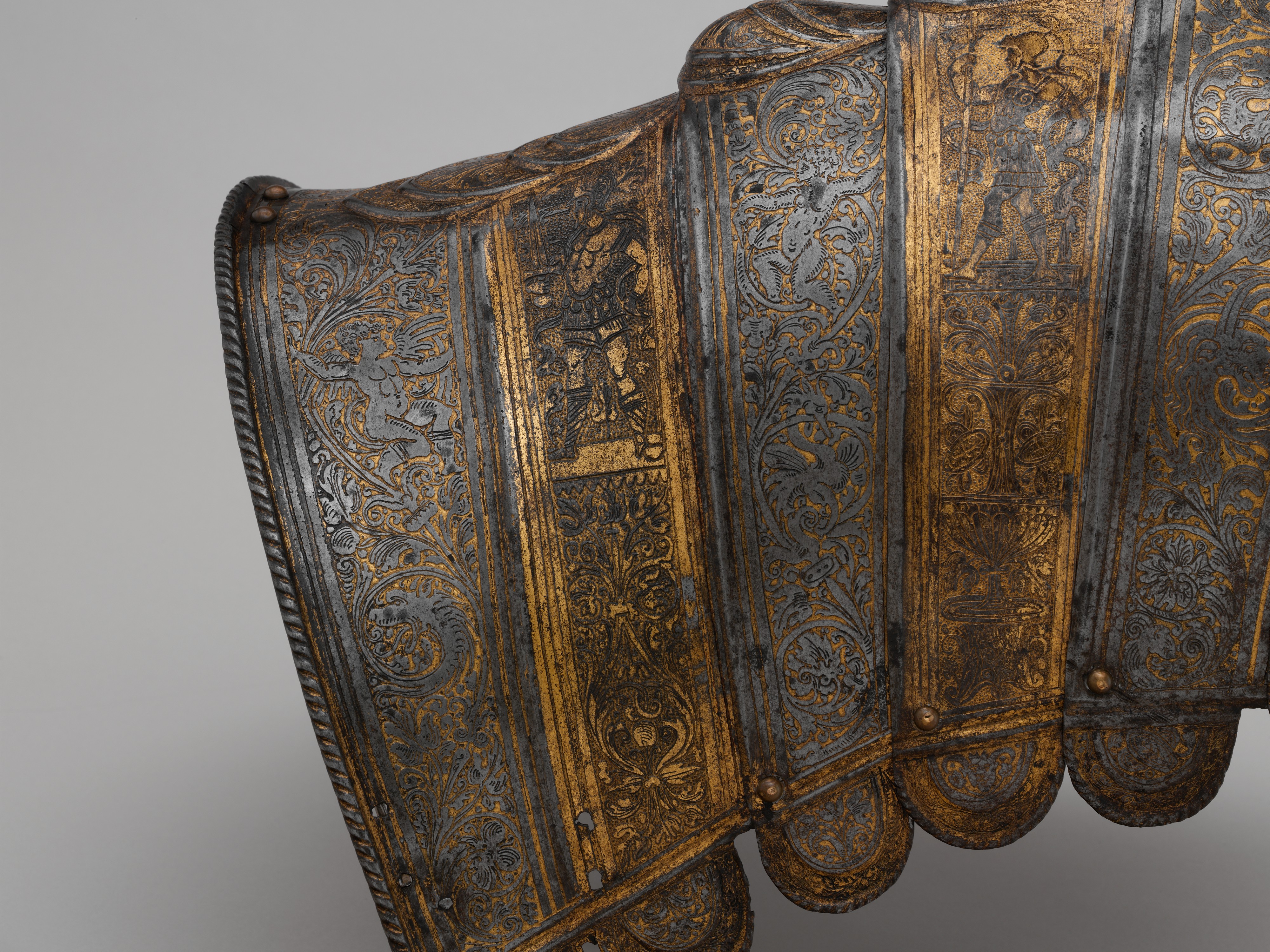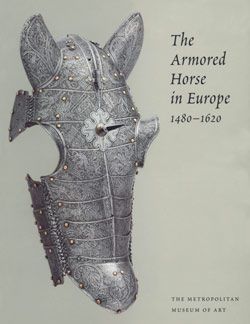Portions of a Crinet (Horse's Neck Defense)
Not on view
This splendid fragment, etched overall and richly gilt, must have belonged to one of the most magnificcent Brescian horse armors of the sixteenth century. It consists of five plates forming the rear half of a crinet that originally must have comprised ten or more plates; the poor alighment of the plates indicates that they are not in their original order. The inverted, U-shaped plates are embossed along the medial ridge with backward-overlapping scales etched with foliage. The sides of each plate are etched in alternating designs. One pattern consists of foliate scrolls inhabited by birds, grotesque creatures, and nude putti (with and without wings), the ornament left white against a plain recessed and gilt ground. The other comprises symmetrical, vertically aligned candelabra ornament consisting of vases or foliage, trophies of arms, and platforms supporting images of warriors or allegorical figures. All the designs are gilded and executed againts a dotted ground. The lowest crinet lame, which is etched with two panels of alternating pattern, ends with a boldly turned and roped edge. The lower edges of the plates terminate in semicircular scales, each having a roped edge bordered by a sunken band etched with foliage on a dotted ground. The centers of the scales are etched with flowers, trophies, or a mask left white on a plain recessed and gilt ground.
The variety of ornament, high quality of etching, and extensive gilding distinguish this crinet from most other Italian armors of the second half of the sixteenth century. It comes so close to the Metropolitan Museum's Brescian horse armor from the Collalto armory (acc. no. 21.139.1a–x) in the style of etching and choice of motifs, as well as in the organization of the designs into panels of alternating motifs, as to have originated in the same workshop. The raised band of overlapping scales down the center of the crinet is echoed in the etched scales on the tail guard of the horse armor. It is possible that, like the Museum's bard, this crinet originally belonged to a complete armor, perhaps with a matching armor for the man as well.
The only other element matching the crinet appears to be a shaffron in Konopiště Castle, near Prague. The collection at Konopiště comprises principally the remnants of two distinguished armories: the dynastic armory of the Este family, dukes of Ferrara and Modena, and that of Tommaso degli Obizzi, at Catajo Castle, near Padua, which included the Obizzi family armory along with pieces collected by Tommaso in the late seventeenth century. The Obizzi collection, which contained pieces acquired from the Medici armory in Florence dispersed between 1773 and 1780, was bequeathed to the Este in 1803; the newly augmented Este collections passed by inheritance into the Hapsburg family that same year. The penultimate owner, Archduke Franz Ferdinand, who was assassinated at Sarajebo in 1914, transferred the arms and armor to his hunting castle at Konopiště, which was nationalized by the new Republic of Czechoslovakia in 1918. The complex and confusing provenance of arms and armor at Konopiště––Este, Obizzi, or Medici––makes it difficult now to identify the source of the shaffron and its matching crinet.
Due to rights restrictions, this image cannot be enlarged, viewed at full screen, or downloaded.
This artwork is meant to be viewed from right to left. Scroll left to view more.




